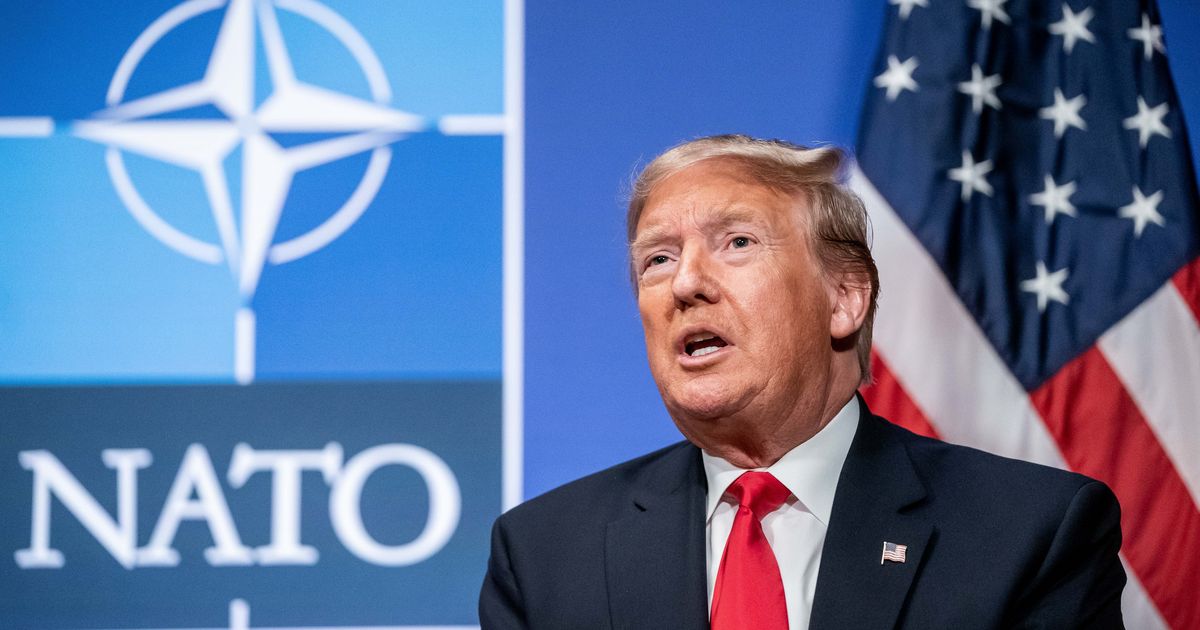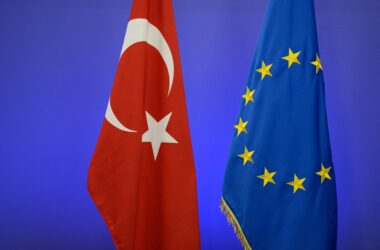As of March, 2025, the possibility of the United States withdrawing from NATO has evolved from a theoretical debate into a scenario actively discussed in academic circles, media outlets, and platforms like X. The US has long been the backbone of the alliance, providing financial, logistical, and military support that underpins NATO’s global influence. If the US were to exit, the implications would reshape transatlantic security and raise critical questions: What path would NATO take, and could Turkey emerge as a rising power in this new landscape? Drawing on recent developments and geopolitical dynamics, this article explores these questions in depth.
A US Without NATO: Initial Shockwaves and Global Implications
The US accounts for roughly 70% of NATO’s defense spending and provides the nuclear umbrella and advanced technology that define the alliance’s deterrence capabilities. Without the US, NATO’s ability to uphold its collective defense principle (Article 5) would be severely compromised. A Russian move against the Baltic states or heightened Chinese economic pressure on Europe could expose vulnerabilities the alliance is ill-prepared to face alone.
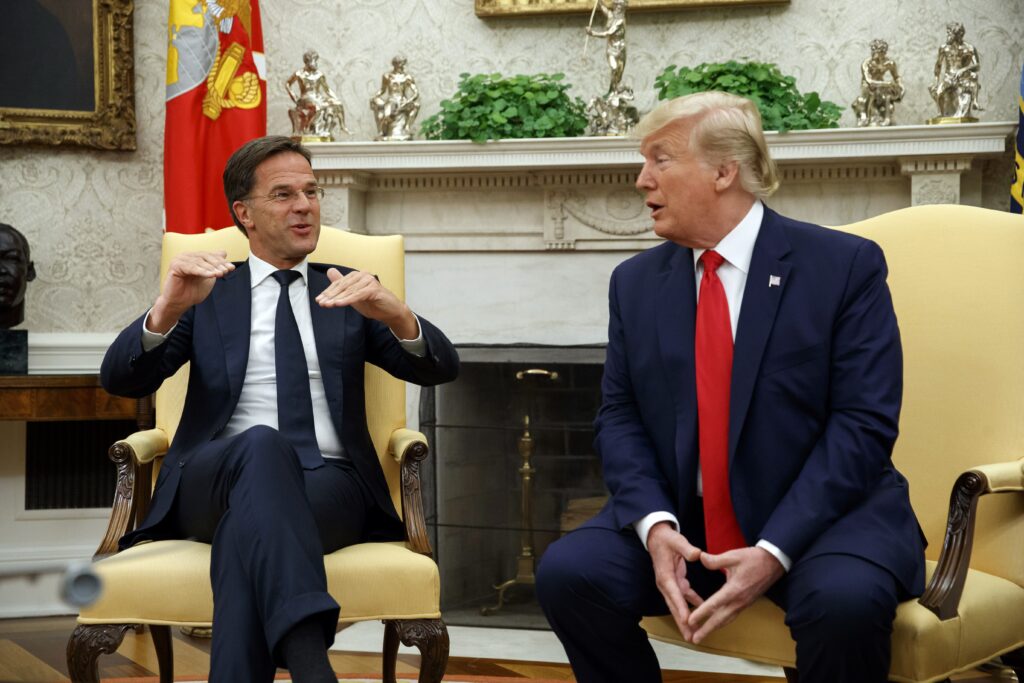
Recent reports suggest Europe is already preparing for such a contingency. Sources like Financial Times and Politico indicate that European leaders have held informal talks about a “NATO without the US,” sketching out a 5-10-year transition plan. Posts circulating on X hint at discussions within the European Union (EU) about accelerating military integration, potentially reviving the idea of a “European Army.” Yet, building such a structure would demand significant political will and resources—both of which remain uncertain.
For the US, leaving NATO could align with an “America First” pivot, a stance that gained traction during Donald Trump’s potential re-election campaign in 2024. By March 2025, this rhetoric has intensified, with calls to redirect resources from Europe to the Pacific to counter China’s rise. However, a NATO-less US might find its global leadership diminished. Historical interventions—from Korea to Iraq—demonstrate that alliances amplify American power and legitimacy. Without NATO, the US risks diplomatic and strategic isolation, even as it retains unmatched unilateral strength.
NATO’s Roadmap Post-US
If the US departs, NATO could follow several trajectories:
- A European-Centric Alliance: NATO could transform into a European-led defense pact, with member states boosting their military budgets and developing independent nuclear and conventional capabilities. France’s nuclear arsenal and the UK’s military infrastructure could anchor this shift, while Germany’s economic might provides financial heft. Success, however, hinges on overcoming historical rivalries and policy differences—such as France’s push for “strategic autonomy” clashing with Germany’s cautious approach.
- Fragmentation and Regional Blocs: Failure to unify could lead to NATO’s dissolution, replaced by localized alliances. Scandinavian nations might form a northern bloc against Russia, Poland and the Baltics could establish their own defense pact, and Southern Europe might prioritize Mediterranean security. This would erode NATO’s global deterrence and leave Europe fragmented.
- A New Global Partnership: To fill the US void, NATO might court Asia-Pacific powers like India, Japan, or Australia, evolving from an Atlantic-focused entity into a broader security network. While ambitious, this expansion would face logistical and political hurdles, risking discord among current members.
As of March 2025, Europe appears to lean toward the first option—a European-centric alliance. Germany, France, and the UK are reportedly exploring a “triad model”: naval power (led by the UK and Scandinavia), land forces (Germany and Eastern Europe), and strategic leadership (France). This framework includes proposals for a joint European defense fund to offset the loss of US nuclear deterrence. Yet, its viability depends on political cohesion and the urgency of external threats like Russia.
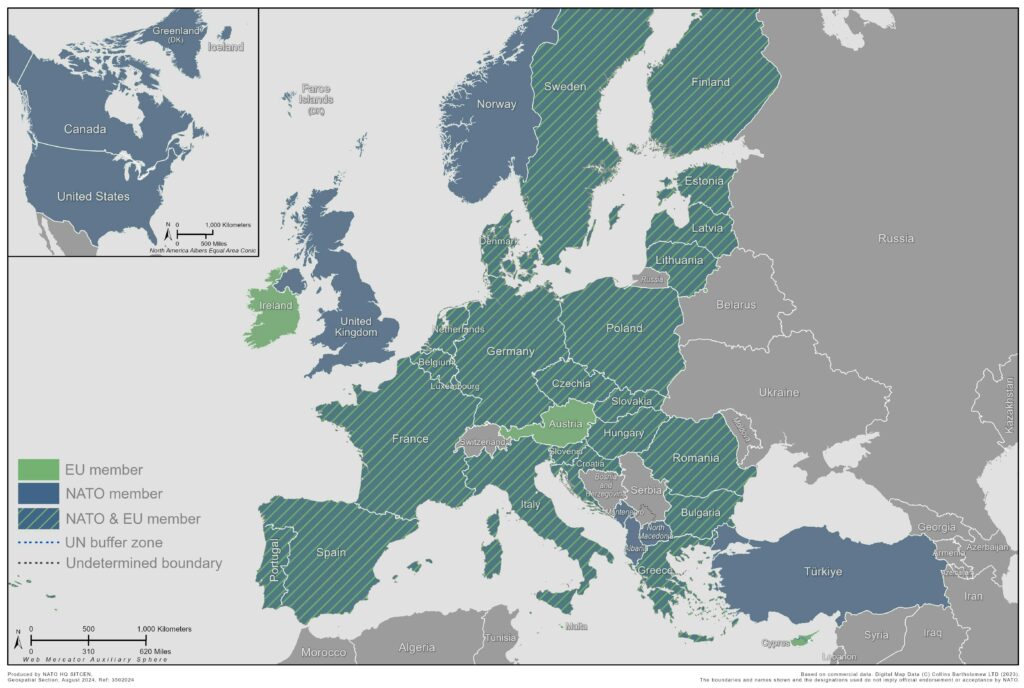
Could Turkey Rise as a Key Player?
Turkey stands out as a potential rising power in a post-US NATO, thanks to several strengths:
- Military Might: With NATO’s second-largest army, Turkey has bolstered its defense industry with homegrown drones (e.g., Bayraktar TB2), tanks, and missile systems. Its role in the Ukraine-Russia war showcased this capability, earning global recognition.
- Geopolitical Leverage: Straddling the Black Sea, Middle East, Caucasus, and Mediterranean, Turkey’s strategic position is unmatched. Its proximity to Russia, control of the Bosphorus, and role in energy corridors make it indispensable. A US exit would amplify Turkey’s importance on NATO’s eastern flank.
- Diplomatic Agility: Turkey’s independent streak—balancing ties with the West, Russia, and China—has proven effective. Its mediation in the Ukraine-Russia conflict and the grain corridor deal highlight its crisis-management skills, positioning it as a potential stabilizer in a fractured NATO.
Yet, challenges loom. Tensions with allies like Greece and France, coupled with criticism of Turkey’s “go-it-alone” foreign policy, could undermine its leadership bid. X users note that Turkey often prioritizes regional interests over alliance unity. Economic struggles and domestic political divides further complicate its ability to sustain a dominant role.
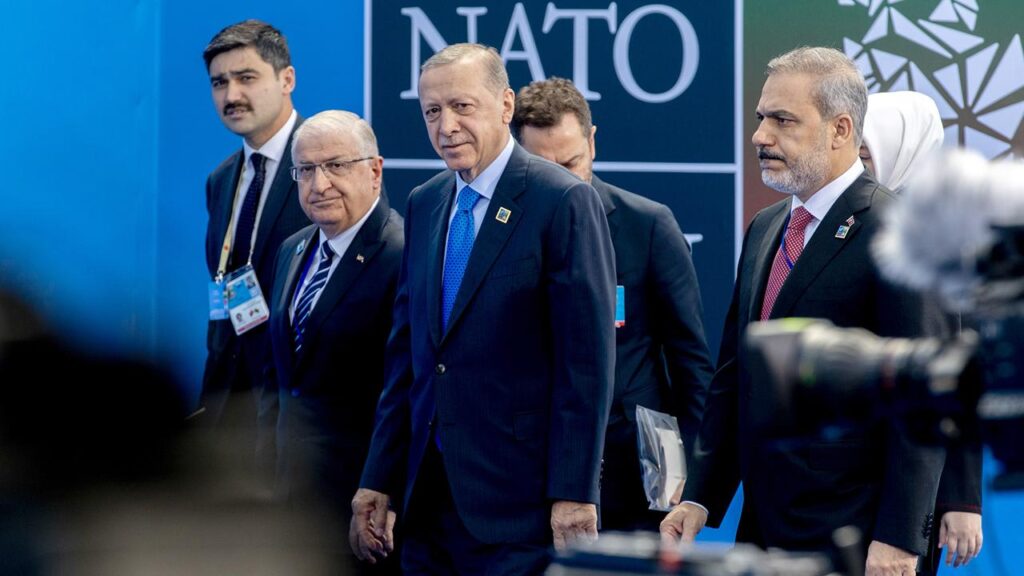
A Scenario for Turkey’s Role
In a US-less NATO, Turkey could dominate the alliance’s eastern flank. It might spearhead a “Black Sea Alliance” with Romania and Bulgaria to counter Russia, or partner with Poland to fortify a defense line against Moscow. Its influence in the Middle East and Caucasus could also stabilize NATO’s southern and eastern frontiers.
However, Turkey is unlikely to lead NATO single-handedly. It lacks the financial and technological edge of France, Germany, or the UK. Instead, it could thrive as a pivotal partner in a European coalition, leveraging its strengths to secure a prominent seat at the table. Analysts on X suggest Turkey could emerge as the “eastern anchor” of a restructured NATO.
Conclusion: NATO’s Future and Turkey’s Place
A US withdrawal would thrust NATO into uncharted territory. As of March 2025, Europe’s preparations signal a shift toward a triad-led model, blending French vision, German funding, and British military prowess. The alliance’s survival rests on Europe’s ability to unite and shoulder greater responsibility.
Turkey, meanwhile, holds the potential to rise as a linchpin. Its military prowess, strategic location, and diplomatic flexibility make it a critical player—particularly as threats from Russia and China grow. While it may not claim outright leadership, Turkey could solidify its role as an indispensable partner in NATO’s next chapter. The coming years will test whether it can overcome internal challenges and alliance tensions to seize this opportunity.


